I am hoping to draw on the experience of Rock gardeners for potential new plant materials for green roofs. Plants that would work well, would include, those that like it hot, dry, sunny, windy, and exposed, in a gravelly somewhat alkaline shallow soil with around ~20% organic matter, and ~80% mineral. Currently, sedums dominate the market. Other plants in somewhat common use include those of the genera; Allium, Talinum, Opuntia, and Sempervivum.
I'm thinking there's many more out there, that would love a green roof. Any ideas?
I'm also planting alpine plants in 6" of green roof media in planters on my windowsills at home. I'm not sure how they'll deal with the reflections off the windows. I'm sure some won't like Chicago, some will succeed.
My current windowsill is planted with;
Acantholimon armenum
Androsace hirtella
Anemone blanda 'enem'
Arabis x kellereri
Astragalus angustifolius
Calceolaria ex. garden Barrie Porteous
Campanula betulifolia
Campanula trogerae x betufoliae
Daphne 'Lawrence Crocker'
Daphe 'Schlyteri'
Draba bryoides
Penstemon uintahensis
Penstemon virens
Petrophyton hendersonii
Saxifraga 'Sieberi'
Silene acaulis 'Anne Spiegel'
Currently these are all dormant, but have Southern exposure. I can change to an Eastern exposure without too much difficulty. Does anyone have any thoughts?
Comments
Re: Potential green roof plants
I certainly will, here's a picture of my plant order from Wrightman Alpines. I've also sewn alpine seed from 'plant world seeds' outdoors in similar windowsill planters. These are my initial trial plants for Chicago.
Re: Potential green roof plants
Excellent environment for alpines! I grow quite a few on your list on a sand bed; a lot deeper than 6" but otherwise probably similar in many respects. Have you seen the book 'Planting Green Roofs and Living Walls' by Nigel Dunnett and Noel Kingsbury? This has extensive listings of many alpines and small perennials. The authors are both extremely knowledgeable and the information from good experience.
Re: Potential green roof plants
These plants are growing in pure sand, in eastern Turkey: Artemisia sp, Orobanche sp, Astragalus sp, Campanula aucherii, Gypsophila?
Re: Potential green roof plants
Here are a few general suggestions, of genera to look at. Many have low mat forming species that may thrive on shallow soils and dry breezy exposures of the roof tops. As was suggested look at the western dry land species.
Eriogonum
Erigeron
Arenaria
Minuartia
Phlox
Antennaria
Townsendia
Epilobium
Camissonia
Calylophus
Oenothera
Potentilla
Penstemon
Re: Potential green roof plants
Dunnett is my homeboy. Havent read that one, but own a few of his other books and quoted his research heavily in my thesis. Snodgrass has a book on green roof plants that's pretty great. I always feel however, that until you grow a plant yourself, you don't really understand it. I've been putting together a large body of research on potential green roof plants, and I'm currently trialing 86 species on a semi-intensive green roof system. But alas, it is winter, and not much is happening with them. So I read, and prepare for my window of opportunity. The research roof is going into it's third season, and as they say, "sleep, creep, leap". So this season will really be awesome I hope.
Regarding western desert species, I have added seed from Erysimum capitatum. I hope it likes the environment.
Re: Potential green roof plants
It would be worth contacting Nigel Dunnett directly (at Sheffield University). I think he would excited to hear from anyone trialling plants in this way and he is very approachable.
Re: Potential green roof plants
Hello JD, a belated (from me) welcome to the NARGS Forum, been working overtime this week. Green roofs is a most interesting topic, one that I'm personally fascinated with. I believe all of us here would like very much to learn more about your work with green roofs, and help brainstorm on plants most appropriate for such conditions.
Years ago when I was a young boy, my family would frequently vacation in Montreal, and stay at the Bonaventure Hotel (now Hilton Montreal Bonaventure), a wonderful and distinctive hotel. The hotel itself is the top 3 floors of a huge conference center, the top 2 floors also look inwards towards 2.5 acres of mature landscape, pools, and a maze of running streams and waterfalls, all at rooftop level. The landscaping was stunning, one of the first green-roofs, way ahead of its time. Even the drive-up entry plaza is a green roof over the parking garage. The integrated landscape/waterscape features were designed by large multidisciplinary Boston area design firm Sasaki Associates, perhaps best known for large scale Landscape Architecture projects. I did not know this fact until much later in my life.
Hilton Montreal Bonaventure hotel - rooftop gardens and water features
http://www3.hilton.com/en/hotels/quebec/hilton-montreal-bonaventure-YULB...
After choosing a career in Architecture, I ended up working for Sasaki Associates, it was a pleasing coincidence to discover it was this firm that designed the amazing gardens at the Bonaventure Hotel. I worked for this company a total of 20 years (worked for them twice); I find their work in all disciplines (Architecture, Landscape Architecture, Interior Architecture, Civil Engineering, Urban Planning) to be of the highest quality and inspiring. They do quite a bit with green roofs, here are some links.
ASLA - LAND online, landscape architecture news digest, August 2006
Sasaki Associates: A Comprehensive View on Sustainable Design
Photo example of the Manulife building in Boston, with a beautiful prairie-grass style green roof planting.
http://landarchives.asla.org/2006/0807/sasaki.html
...another article on same building
http://www.landscapeonline.com/research/article/6965
ASLA green roof articles
http://www.asla.org/ContentDetail.aspx?id=25382
Sasaki Associates project: The Avenue, Washington DC, the detail section views are really interesting.
http://www.sasaki.com/project/8/the-avenue/
Sasaki Associates, selected portfolio images of Green Rood designs.
http://www.sasaki.com/projects/tag/green+roof/
Re: Potential green roof plants
Ed Snodgrass was the speaker at our Chapter banquet in 2008. We all learned a lot.
You might also consider some of the miniature bearded iris. Some Chapter members here have a green roof on their shed. They resolved to grow no sedum or sempervivum spp. there. At the moment, the only things I can be sure of that they do have up there are dianthus spp. They do say that grasses (no specification) are unwanted weedy volunteers. I might be a little leery about introducing grasses intentionally, but perhaps Bouteloua hirsuta. B. gracilis, I think, would be too vigorous.
Re: Potential green roof plants
That really is wonderful, from Sasaki. That's some roof, it's rare that a space like that is created and then maintained properly for years and years.
Regarding grasses on green roofs, they are wonderful.
To explain my theory on green roof ecology, I start with a successional model. I believe that a green roof installed with Sedum is the first step along a greater journey. Initially plants like lichens and mosses colonize rocks and create primitive soils which hold more moisture. Then larger plants move in, establish a grassland, then a forest. In the case of a green roof, abiotic factors like wind, temperature, media depth, fertility, and sunlight limit which stage of succession the green roof is 'frozen' in. I argue that Sedums are analogous to mosses and lichens in green roof succession. A lot of people villify Sedums, even on here. I view them as the dominant organism on an extensive green roof (4"), and as a colonizer on a semi-intensive system (6"). Once they create a thick rhizosphere, then other things can become successful, like grasses and forbs. I use Sedums to create 'islands' of moisture and life, then I introduce grasses and forbs into these islands. I'm a huge advocate of using seed on green roofs. Alpine gardeners seem to believe in utilizing seed as well. Everyone in my industry is so damn impatient. I view a green roof as a three year establishment. Many believe that simple maintenance on a green roof, something as simple as irrigating twice a month in the growing season, is just too much to ask. I disagree.
Attached is one of the roofs I maintain. I think the grasses are beautiful. If I were to recommends any, I'd say Eragrostis spectabilis and Koeleria macrantha are my favorites. They're both rather short at under 2 ft, at least for a prairie grass. I'm trialing Danthonia spicata, and I'm very optimistic that it will do great.
Regarding Dianthus on a green roof, it can be done in a wetter climate or on a maintained green roof. Otherwise, their dependence on their tap root in a shallow media can make them decline over a period of years. I can't however say how they would do in a semi-intensive media depth. They might do very well. I'm trialing D. 'Firewitch', so let's hope. greenrooftechnology.com suggests D. carthusianorum.
I would like for NARGS as a whole to view Sedums more favorably, I know they're 'too easy', but they can act as a placeholder for more slow to establish species. And in flower, they can be stunning as a mass.
Re: Potential green roof plants
I think I'll contact Dunnett in the Spring, I want some good pictures of the trial roof in bloom.
Re: Potential green roof plants
Our local native plant guru, Dr. Leopold of SUNY ESF is researching native plant material for greenroof application. He has taken a bit of different approach. The link will take you to some information and scrolling down is an interesting list of plants he is experimenting with.
http://www.esf.edu/outreach/gi/symposium/documents/toland_etal.pdf
(Moderator note: to gauge download time, PDF file size is 7.7 MB)
Re: Potential green roof plants
Thank you, Harold, that's pretty cool. It's so hard to source plant material like that, but I guess one just has to try. It doesn't say if these were irrigated. Oftentimes, when I read a study, they put in some native plants, walk away, come back a year later and when they're dead, call them failures. However at grade, we give a prairie 3-5 years to establish, which is a much kinder environment. The Ecology of using plants from single plant community is a cool idea, since who knows how these plants are interacting with each other. I look at his research and I ask this, what if the natives were planted into a completely established Sedum? Would the survival rates have been higher? The Sedums hold moisture, while blocking sunlight from hitting the media.
Here's some photos of green roofs I'd like to share, Sedums in extensive and semi-intensive roofs. They grow quite differently! And a shot of Eragrostis spectabilis grass in flower. More people should grow it, it likes hot, dry, sand. Prolific self seeder. Here's one of some colorful huge moth on a Coreopsis palmata.
Re: Potential green roof plants
Might I suggest looking at Stipa hymenoides (syn. Achnatherum hymenoides & Oryzopsis hymenoides) Indian Ricegrass. It has a large native range across the western North America and is very drought tolerant tufted grass. (photos below)
Another good choice for a shorter tufted effect would be Bouteloua gracilis, Blue Grama also drought tolerant.
Re: Potential green roof plants
Stipa hymenoides looks very promising. Already growing the Bouteloua gracilis, which I affectionately call eyebrow grass due to the seed head. Also growing Schyzachyrium scoparium, Bouteloua curtipendula, Koeleria cristata, and Panicum virgatum.
Re: Potential green roof plants
Some of us are fans of Sedum here! I started some basic rock gardening in my teens, and had started growing cacti and succulents indoors just before that, so my first plant loves are succulents, and any succulents that can be grown outdoors in this cold climate are exciting to me, including Sedums, both common mat forming species and less grown small clumpers. I only have a few now, but hope to expand that number over time!
I'm sure the bulk of people who will be using buildings with green rooves, appreciate a more lush (taller) vegetation, but personally I love areas that have low plants only longterm. Although trees/shrubs can be wonderful for shade and form, I know when I lived in the city, the most exciting thing to me was any space where I could see/feel the sun and have a clear view for more than a few metres!
Re: Potential green roof plants
I'd wager too that most people here are growing a variety of Sedums... The more commonly-grown species may not always feature largely in the "to die for" alpine plant discussions, but just browse around a bit (e.g. the "What do you see on you garden walks" threads) or go to main page and the plug the word "sedum" into the search function. :)
Great discussion on green roofs! Thanks, GreenRoofer!
Re: Potential green roof plants
A lot of people villify Sedums, even on here....
I would like for NARGS as a whole to view Sedums more favorably, I know they're 'too easy', but they can act as a placeholder for more slow to establish species. And in flower, they can be stunning as a mass.
When I mentioned that my friends "resolved to have no Sedum or Sempervivum spp." on their shed roof, I didn't mean they didn't like them. They grow many sedums in their gardens and numerous troughs. I think they wanted to prove that they weren't a necessary components on a green roof. Thirty years ago when they built it, I believe this was a prevailing notion. I am sorry to have mislead you, if this is where you got the idea that NARGS looks down on sedums.
As rock gardeners, we just use sedums differently from your green roof ecology theory. While alpine and green roof ecologies do intersect, obviously, they are not the same. I grow seven sedum species, myself. Likewise, grasses certainly are beautiful on a green roof, but I erroneously assumed you were asking for alpine compatible materials. My apologies, then, for my past comments on same.
Re: Potential green roof plants
In Norway green roof usually means turf on the roof. Turf has been used in millenia although it fell out of use last century. Now it is increasingly popular, especially on cabins:
http://www.google.no/search?q=torvtak&hl=no&client=firefox-a&hs=vaN&tbo=...
Although grass is the predominant type of plants, other kind of plants are used too:
http://www.google.no/search?q=gr%C3%B8nne+tak&hl=no&client=firefox-a&hs=...
Here is my version:
Re: Potential green roof plants
It's great how this Forum stimulates new ideas. This brick shed in our garden has been enveloped in wisteria and covered by the neighbour's leyland cypress for years and needs renovation! We were simply going to re-roof it, but now it's obvious that we should plant it as a 'green roof', even if on slightly smaller a scale than discussed earlier. It won't be able to carry the weight of Trond's cabin (!) and tallish, drought tolerant species would be necessary to show up well - grasses, irises, maybe annuals like Omphalodes linifolia. Will be an interesting project and I am very grateful that this thread got started.
Re: Potential green roof plants
Forgot to mention about our Chapter banquet with Ed Snodgrass:
Each table had a centerpiece that doubled as a doorprize. We made little 8 x 8 inch houses complete with green roofs, planted with alpines. Gosh, they were cute. 8)
Re: Potential green roof plants
Rick, was it only one winner at each table?
Tim, exciting project! keep us informed how it develops!
Re: Potential green roof plants
1 centerpiece per tabie = 1 winner per table.
But for the last ten years, it has become a voluntary tradition at our banquets that anyone can bring door prizes if they want. We usually have more gifts than there are attendees! We've had to streamline that part of the evening (door prize giveaways) because it was taking too long to distribute them!
Re: Potential green roof plants
For small green roof projects you can make your own media out of 80% Expanded shale clay slate (available as a concrete weight reducer at large concrete distributors) or even lava rock, lighter color the better. You can also use Pumice if you can find it in your region. Add 20% half and half mix of aged compost and pine bark mulch and you've got it. The ESCS tends to go alkaline over time, but that's not hard to fix. That is essentially an entry level green roof media, I know of one distributor that blends his own media for all his projects.
You can use a pond liner as your waterproofing membrane, and many green roofs omit the water retention layer without ill effect, especially if you don't mind irrigating once or twice a month when it's hot.
What a fun project that would be, I've been fantasizing about greening a shed, and putting some sort of wire on the outside, and training passion vine and cucumber vine onto it, for this cool green structure.
Re: Potential green roof plants
I think I got the link somewhere on this forum the other day, but don't see it at a quick glance in this thread, so just in case- do check out the green roof plant selections at hardyplants.com
Re: Potential green roof plants
So HardyPlants.com advocates Achillea, Allium, Aquilegia, Acaena, Sedum, and Dianthus. One of the Alliums they suggest is A. tricoccum, a woodland plant. The Aquilegias, Achilleas, and Dianthus would melt out in an extensive system. They might survive in Semi-intensive. Good source for seeds. Not sure about the Acaena, that's new to me. I'm trialing Aquilegia caerula, and A. canadensis. I'm hoping they like growing in 6inches of gravelly medium in the hot dry sun. They'll be watered a little, but the ultimate goal is to not water more than once a month. I cheated last summer because of the drought and heat wave. I don't expect much to survive when it's 100 and hasn't rained in 3 months, including me! It's hot up there, and I can't take it for long sometimes. It's fun to garden somewhere that almost no one is allowed to go, no rabbits, no deer, no slugs. There's pigeons, crows, songbirds, lots of killdeer, tons of insects at any floor, mainly grasshoppers, spiders, syrphid flies, wasps, bees, butterflies and moths. The flying insects become very rare on the really tall buildings. Everything else can live happily on the top of skyscrapers, nature is amazing. One book people on here might like, is called 'Life at the Limits', it's about life existing where it would seem unlikely.
Lots of the plants that fail on the green roof will likely end up in my future garden or current outdoor windowsill planters. We had an icestorm in Chicago last night, all my plants had a thick coat of ice.
Re: Potential green roof plants
I have encountered some questionable advice in the past, too, on hardyplants.com.
Allium tricoccum, especially, would be a terrible green roof plant!
I think they just listed their entire selection of Alliums, without regard to speciesl :rolleyes:
Re: Potential green roof plants
In my many years living in large cities, I was very seldom on any kind of rooftop! Mind you I only very rarely lived or worked in high rises.. I did have a few seasonal pots outside a second story door on a little patch of roof in a 3 story Victorian house, but that's about it! Interesting to know what birds and bugs make it to the heights!
I wonder if you are familiar with the great (late) Brasilian modernist landscape architect Burle Marx? He's a long time favourite of mine, and I was recently looking at some of his gardens, and noted a number of roof installations (sorry, don't remember which of those shown at the link below included rooves)- usually including water.. these were long before the current interest in green rooves..
http://www.mraggett.co.uk/rbm/index.htm
Re: Potential green roof plants
This gets more and more interesting when you start to think of city buildings as simply being another ecosystem, and it is obvious that plants are a lot more finely tuned to environments than we often give them credit. I have a book by the incredible French plantsman, Patrick Blanc, who creates vertical plantings on buildings. What comes across is how closely he has studied natural ecosystems where plants grow on rocks and in such extreme conditions and he has developed his plantings on such individual study. It seems obvious but it takes a lot of confidence to follow your own nose and work it through. The results are amazing and completely transform the barren appearance of many city landscapes. That combination that Mark mentions between architects and plantspeople is a brilliant one when it's allowed to come off.
Re: Potential green roof plants
I'm trialing Aquilegia caerula, and A. canadensis. I'm hoping they like growing in 6inches of gravelly medium in the hot dry sun.
I'm betting that Aquilegia canadensis will do just fine. In my garden, it thrives in full sun in a limestone barrens: 8" of limestone gravel over hardpan. Admittedly, my plants have the advantage of access to the subsoil, but still... even during droughts they never wilt.
Re: Potential green roof plants
Speaking of Green Roofs, this article appeared in the Vancouver Sun Blog reviewing the huge green roof installed on the expanded convention centre, prior to the 2010 Winter Olympics.
Here is the link to the blog post: http://blogs.vancouversun.com/2011/11/24/grading-vancouvers-giant-green-...
Plant materials are listed, and some of the photography really brings home the size of this new downtown meadow they created.
Re: Potential green roof plants
Interesting project! I agree more public viewing areas would be nice, and sprucing up the public area mentioned, but I think there are a couple of somewhat conflicting views here-i.e. the writer vs the landscape architects. On one side, the planners/planters seem to be most interested in representing, preserving, expanding habitat for native species of plants, birds and insects. The writer acknowledges that this aim seems to be quite well achieved, but in looking at the planting as a 'garden' rather than a habitat restoration seems to find it falls short on criteria of aesthetics and public access (public access at some point of course comes into conflict with the needs of habitat maintenance)..
So, two somewhat different ideas about what might constitute success. I think it's probably important for any public project to find a balance between them, in order to meet environmental protection objectives and still keep the public interested and on board!
Re: Potential green roof plants
I'd like to share an image of one of current favorite green roofs. I really like this design. from GreenRoofTechnology.com. Simple, effective.
Re: Potential green roof plants
Looks like the occupants of those 3 chairs would have a great view in front of them, close and longer range...
Re: Potential green roof plants
I'd like to share an image of one of current favorite green roofs. I really like this design. from GreenRoofTechnology.com. Simple, effective.
A nice one! Almost like a meadow ;D
Re: Potential green roof plants
Glad you like the images, it's a cool company. Here's an image of my trial roof, found it the other day and thought it would be nice to share. It's a prairie restoration on a rooftop. 90% native. The grasses are filling in well.
Native Illinois prairie plants on this roof that would work well in a rock garden in my opinion:
Heuchera richardsonii (Saxifragaceae)
Opuntia humilis (scars on my hands from weeding around them, but still lovely)
Talinum calycinum
Antennaria neglecta/dioica (literature cites allelopathy, haven't seen evidence of it myself though)
Silene regia (Tall at 4' but very narrow, doesn't get as tall on the roof, maybe 1.5')
Callirhoe involucrata (stunning pink flower, nice foliage, procumbent habit)
Anemone cylindrica (seedheads really look like thimbles)
Dalea purpurea (Stunning purple flower, interesting foliage, and seed head that's fun to pull apart, N fixer)
Of any of these though, I think everyone should grow Talinum calycinum, they could not be happier, more well behaved, generous little plants. Often called an annual, I have found mine to be consistently perennial in zone 5. Their bright pink flower opens for a short while in the early evening in the direction of the sun. Loved by bees, the flowers dance on their thin stems in the slightest breeze. Everyone should throw a packet of this into their rock garden. They spread, but never to the point of nuisance. They spread like Aquilegia or Corydalis. Easy to prop from cuttings, but even easier from seed. I intend to make this species extremely available to the next seed exchange.
Re: Potential green roof plants
Nice set of plants there- Talinums are favourites of mine, but only theoretically so far- I don't have any yet, but love any hardy succulents ;D
So how long post planting is this roof?
Re: Potential green roof plants
Awesome green roof - 5 inches of media. That inch beyond an extensive roof of 4 inches really opens up your plant palette. Irrigated.
http://www.roofmeadow.com/wp-content/uploads/Pacific_Plaza_2011_05-7.pdf
What is that pink flower? It's gorgeous.
Re: Potential green roof plants
Nice set of plants there- Talinums are favourites of mine, but only theoretically so far- I don't have any yet, but love any hardy succulents ;D
So how long post planting is this roof?
It's hard to say, I started work on that system in May of 2011, planted some that first summer, planted more this summer from nursery stock and my own grown trays, then added more seed this winter.
Re: Potential green roof plants
Looks like it is coming along quite nicely!
Dalea purpurea (Stunning purple flower, interesting foliage, and seed head that's fun to pull apart, ...
Gee, I find nearly any seedhead fun to pull apart. ;D
Dalea purpurea in the wild (Minnesota).
Of any of these though, I think everyone should grow Talinum calycinum, they could not be happier, more well behaved, generous little plants....
I don't think you'll find any disagreement there. Phemeranthus(Talinum) calycinus, or just about any Phemeratnus or Talinum, would/are welcome volunteers in my pots, too.
Re: Potential green roof plants
Interesting that allelopathy has been reported for Antennaria neglecta. I also haven't seen any evidence of allelopathy, and I've grown it for years. I do get a nice crop of American painted lady caterpillars on it every year.
Re: Potential green roof plants
I really like the Vancouver example! Looks fantastic!
Not sure if it's correct or not (maybe just a false impression) - the plants on the Tacoma roof look like they were planted in rows(?).... Always a bit disturbing to my eye (preferring the randomness of nature, though, as I say, I may be totally mistaken)... ?
Re: Potential green roof plants
Greenroofer:
What is that pink flower? It's gorgeous
I think the plant you called out on the Pacific Plaza roof in Tacoma is likely some species or hybrid Clarkia.
Re: Potential green roof plants
Nova Scotia contains zone 6b? Thats wild, must be the ocean currents? I went to school in Carbondale, Illinois and that was zone 6. Which is 6 hours south of Chicago by car.
Clarkia...looked it up and it might be a great green roof plant, my selections of plants for sloped extensive roofs are all tending towards the color pink! I hope it doesn't offend the heteronormativity of the roofing industry. I'm wondering if the color pink is beneficial to xeric survival in succulents outside the Cactaceae. Does the color pink go a distance or attract a specific pollinator...flower color and morphology are fascinating. It's so cool that some flowers select their pollinators as much as the pollinators select the flowers.
I'm a bit leery of annuals, perhaps I should withdraw from that bias, so long as they are self-seeding.
Re: Potential green roof plants
Clarkias, poppies and many other annuals will self-sow so thickly that the plants will be too crowded to bloom. In the garden, I can just thin them with a hoe. Not sure how you would handle it on a roof.
Re: Potential green roof plants
Quote from Greenroofer
Nova Scotia contains zone 6b? Thats wild, must be the ocean currents? I went to school in Carbondale, Illinois and that was zone 6. Which is 6 hours south of Chicago by car.
Actually, the extreme south of Nova Scotia is zone 7A. Not many folk realize we are as far south as roughly Eugene Oregon, or Marseilles, France, but without such mild weather. Yes, the ocean and Bay of Fundy moderate the influence of the rest of the continent, but we sometimes still get winter blasts.
Clarkia would likely perform well as a green foof plant. I wonder.... if you are looking for something in a bit different hue- would Lithodora survive where you plan to use it? Lithodora Grace Ward is a stunner when in bloom.
Re: Potential green roof plants
A green roof plant is described thusly;
1) drought tolerance (xeritolerance)
2) preference for gritty soils with perfect drainage
3) low nutrition needs
4) full sun
5) not tap rooted, media depths are inadequate to make this adaptation useful
6) prostrate or wind adapted
7) cold hardy one zone beyond that in which it is planted, zone lowered with greater height
8) provides soil cover, or has a stunning flower as an accent plant
Many people try to point to barrens, glades, or cliff lines as being similar to a green roof. Take one of those ecosystems, remove 100% of the fractures in the rock into which roots might generally grow, and elevate it 15 - 650 ft in the air with shear drops on all sides and you have a green roof. Media depth is generally from 3 1/2 - 8 inches. 3 1/2 supports various succulents, mostly sedum. 5 - 7 supports prairie. >7 can support larger species like shrubs. 80 - 90% fired ceramic aggregate as media, 20 - 10% long term stable organics.
What plants grow in your gardens, that just refuse to die? When you bake them in the hot sun, and forget to water them, and they send up bright and happy growth regardless? Plants which grow and provide cover where nothing else could thrive, in just a few inches of grit? What serves you selflessly no matter the droughts you face? Tell me the names of these plants, for they are very...precious to me.
Re: Potential green roof plants
Lithodora seems to have average water needs, which is beyond a green roof. I love plants of the Boragincaceae though, and would love this gem in my own future rock garden.
Re: Potential green roof plants
The first thing that pops into my mind is plants that store food and water: cacti, bulbs, taprooting plants. Have you tried tulips and crocus? How about the dryland native bulbs of the western US, like Brodiaea? You said taprooting plants aren't a good choice, but I would give these a try: Lupines, poppies, Mentzelias, Platycodon, Gentiana septemfida. There is also a huge range of spring-blooming annuals from California that might work. How about the strong-growing rock plants like Dianthus deltoides, Helianthemum and Iberis sempervirens? The dwarf conifers are very tough plants.
Re: Potential green roof plants
We have been playing around with one of the "Hardy Ice Plants"- Delosperma cooperi, it is tough as nails. This year we'll add another species to the mix D. nubigenum. Cooperi has such brilliant metallic hot pink blooms, and nubigenum adds equally bright yellow blooms to the palette. Naturally they wont be placed together, the colour contrast would be far too loud! There are several hybrids out there that are patented (such as the 'Jewel of Desert' series), meaning that propagation is an issue without prior agreement and royalties being paid. Delospermas have been extremely resilient plants for us. They propagate on a whim. We are on the lookout for new species to broaden the colour range available in this part of the world.
Re: Potential green roof plants
It would be nice if Panayoti himself could comment, but you'll probably find this interesting, Gordon:
http://prairiebreak.blogspot.ca/p/hardy-mesembs.html
Edit: This is Panayoti Kelaidis' excellent gardening blog.
Re: Potential green roof plants
Wow - if only we could grow those plants like that here; wonderful pictures. Some are grown in the UK but I've never seen such strong and striking plantings and they must need that summer heat that we just don't get. I wonder if grown on a covered Mediterranean bed like I have read of by Dwight Ripley in the 1940's that they might grow and flower like that - they do seem potentially ideal plants for the heat and exposure of a 'green roof'.
Re: Potential green roof plants
Lori- thanks for posting that link! I now have a few more species and hybrids to track down..... as well as several more genera to find and test in our environment. At the moment though, just waiting for the wind and snow from this latest storm to die down.
Re: Potential green roof plants
Delosperma nubigenum is an ok green roof plant in the Chicago climate, dies out in a harsh winter, and at least dies back. I've got it growing in here and there. The stunning flowers and toe-like foliage make an interesting enough plant that I've got it growing on my windowsill.
D. cooperi is not hardy in our climate, it vanishes in our winter. It can survive in Carbondale IL z6.
Zone limits are problematic in my experience, if one had a microclimate situation it might live. My instinct would be to throw many propagules on a roof, and if interbred, cold hardiness should arise. Denver is z5 and z6, if you're growing it in z5 it must be Chicago winter wet which kills it.
Re: Potential green roof plants
Bulbs work very well on a green roof, they do come up as dwarfs though. Which is fine. As for those other species, I will have to start reading up on them. Lupine perennis failed at Chicago Botanic garden's green roof in multiple media depths. Its funny what will succeed. I've seen dandelions fail on extensive roofs, which is actually satisfying when I find them dead.
Re: Potential green roof plants
I'm surprised that Delosperma cooperi doesn't survive your winters. We have pretty wet winters here and although it may come out of winter looking a bit scruffy, it seems to come back. Some plants which don't relish wet winters can be given a helping hand by providing extra sharp drainage.... so that moisture never lingers too long during the season.
A few other plants to look into might be Anthemis biebersteiniana, some of the Helianthemums, and perhaps even a few dwarf cultivars of Lavandula angustifolia (soil depth requirements of the latter one may rule it out). Anthemis biebersteinianaprovides both foliage and floral impact. The leaves are like miniature silvery ostrich plumes, and the bright yellow daisy blooms add a nice contrast. Helianthemums have been used in parking strips in the Pacific Northwest. They are hardy to zone 4, withstand drought and poor soil. Flower color ranges from whites and yellows through pink, orange and red.
Another plant that might be a suitable candidate is Digitalis obscura. A Spanish member of the genus, it is a dwarf, semi evergreen plant that seems to be reliably perennial here in Nova Scotia, and in colder regions as well. The rusty copper blooms are nice, and the foliage is unlike most othe members of the genus.
Re: Potential green roof plants
Just saw this on Facebook, this link should work for anyone whethjer on FB or not.
http://www.blipfoto.com/entry/2920895
Re: Potential green roof plants
Some good little cushions there. It just made me think - I wonder if anyone has tried constructing a vertical rock garden on the side of a building? It could be quite a project in the right situation, a little like some of the amazing constructions of Harry Jans using tufa. Watering would be the key and Harry incorporates this into his tufa columns.
Re: Potential green roof plants
I could envision something like that as a tile, with a more dense backing and fiberglass reinforcing. In a freeze thaw climate, problematic, due to falling hazards. The trick for American architects is to create something that is easy to specify. Build in the irrigation, and the attaching mechanism, keeping the weight low with perlite or ESCS. It would need to slope inwards with greater height.

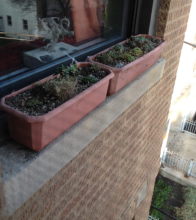
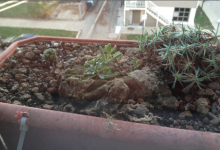
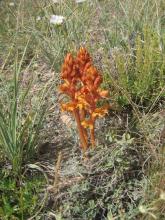
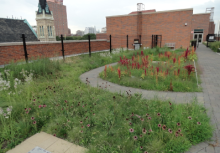
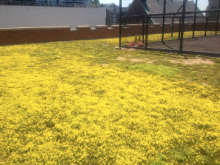
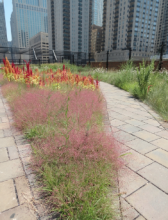
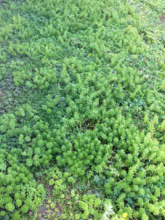

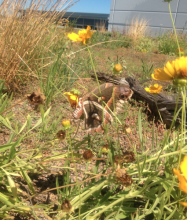
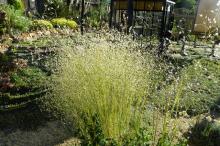
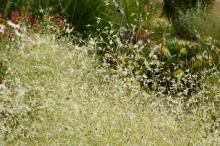
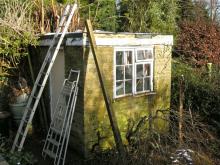
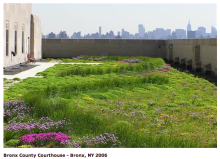
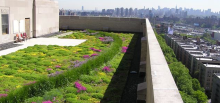
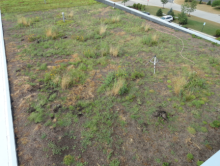
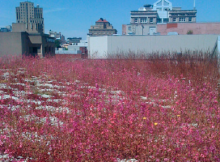
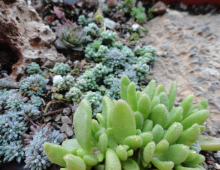
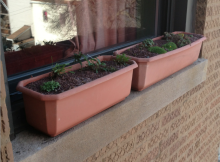
Hi and welcome! You'll find that alpine/rock garden sources have some of the most diverse offerings of any type of gardening, so you have a lot to choose from.
I'm sure some here will have specific recommendations but you can also find a lot just looking through seedlists such as Alplains and other suppliers such as Highcountry Gardens and many other alpine nurseries. Keys for your purposes, I think, will be looking at the habitat of plants- you don't want those from cool alpine tundra, moist alpine valleys or snowmelt areas- all places where plants may expect constant moisture.
At a guess you might look at plants from places like alpine Turkey and western U.S. alpine/dryland areas that experience dry conditions..
Hope you'll keep us posted of things you try and future projects!